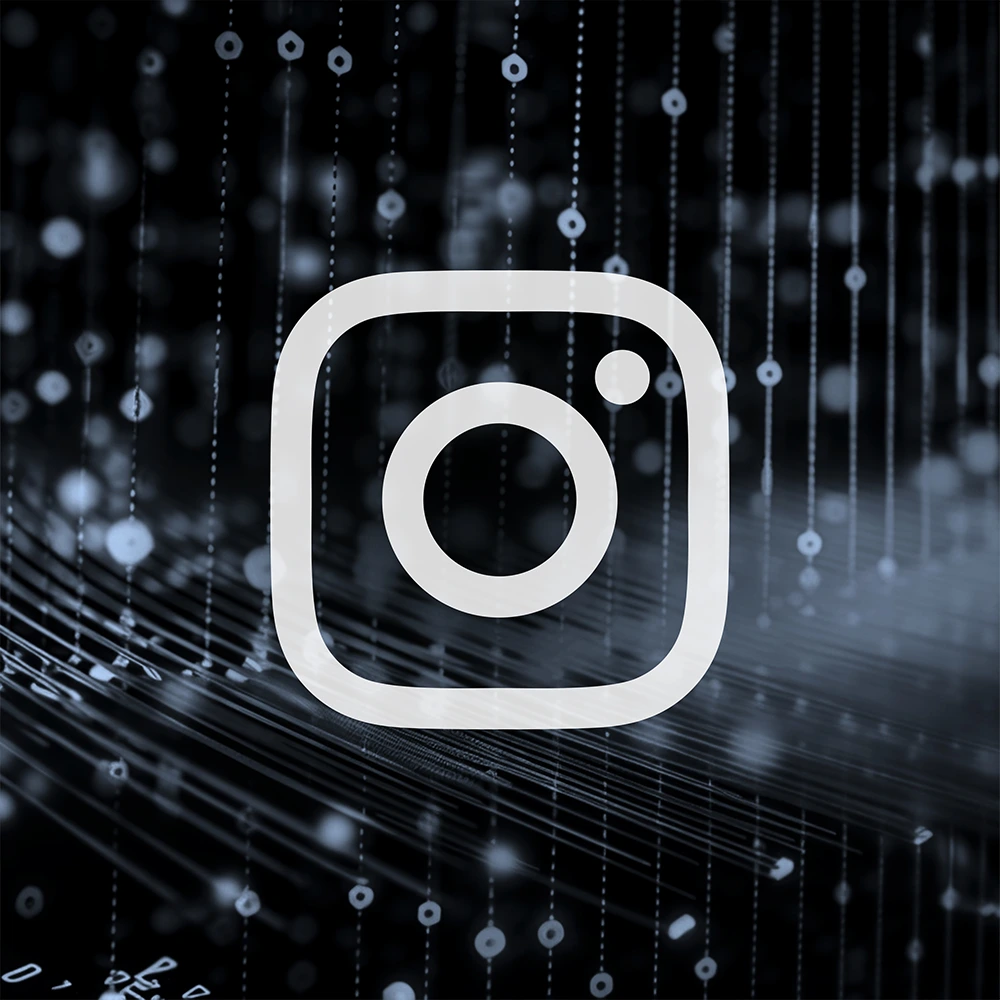B2b social media marketing
The days when everything took place in print are long gone. Brands are managed by numerous players in the company — top management, marketing, communications, sales, support.… The corporate communications and marketing communications departments have lost the authority to communicate. And “not communicating” is not an option. For us as a B2B digital agency, Paul Watzlawick’s first axiom applies here, interpreted for corporate brand communication: “You cannot not communicate.” Certainly not in the digital world and certainly not in social media.


SOCIAL MEDIA MARKETING IN B2B…
From brand awareness to lead generation.
Compared to the many digital communication channels, social media has one decisive advantage: the fact that you know pretty much exactly who you are communicating with. This can be through targeted targeting in paid advertising campaigns as a tool to increase visibility or in interaction with followers and stakeholders and to support the sales process. Social media marketing can be used strategically in various phases of the customer journey:
Brand awareness
Regularly posting informative content — that’s the basis. Particularly in the awareness phase of the customer journey, paid advertising campaigns — also as sponsored posts — are also suitable for building awareness and attracting the attention of potential customers. In social media marketing, this can be measured by the number of people reached and the number of impressions.
Consideration
If a customer is in the consideration phase, they are looking for solutions or more in-depth information. Relevant content in the form of whitepapers or webinars arouses curiosity during this phase. In social media marketing, for example, this can be measured by the number of clicks on a landing page or microsite.
Lead generation (conversion)
The more valuable the content provided, the more willing users are to provide their contact details in return. An unknown prospect now becomes a lead. This can be measured in social media marketing based on the number of completed (lead gen) forms or registrations for a webinar or event.
Social media changes business processes
Which social media channels are important in B2B brand communication? Which messenger services are used? Facebook and LinkedIn are far ahead in international B2B marketing. YouTube, X (formerly Twitter), and Instagram follow at a distance. This shows that, in terms of storytelling and content marketing, not all possibilities for B2B branding and brand management are being fully exploited.
However, it is also the case that just having a nice account is not enough. Social media must be served with content. The content should be multilingual, because the Internet knows no borders. And social media need people in the company who communicate with the responding target audiences in the style of the brand. There is still a lot of potential in this area on the way to user-generated content, ideally in the spirit of the B2B brand.
Messenger services and chat systems are increasingly making inroads into working life. Communication via WhatsApp or the messengers of Facebook, LinkedIn, and Microsoft do not yet dominate business activities worldwide. Things are already different in China with WeChat. The worlds of work and business are blurring with the private world. Cell or mobile phone numbers are exchanged, the communication channel is open, and inquiries and offers, and so on are processed on the phone on the go. This development creates new requirements. How can this communication be mapped and archived in CRM systems and order processes? Or do we need to break away from monolithic structures in business communication, open up, and rely on fair and complete cooperation between employees and customers?
Speed and customer friendliness stand in contrast to the demand for data sovereignty and data security. More interactivity and more participation call for systems to be opened up and for a new form of using media.
Choosing the right channels in cross-channel communication
The number of different social media channels is manageable. However, it is often neither possible nor sensible to use all channels. Choosing the right social media platforms is key. Ultimately, there is no ideal channel mix for digital brand management and brand communication. Every company and every B2B brand must make its own individual selection — depending on the brand positioning, brand strategy, brand messages and, of course, the target audience or audiences.
The individual marketing communication activities and the realization of successful, integrated campaigns must be able to unfold in this space. The interfaces to the quasi-analog world with support, call centers, customer service, etc. are an important component.
LinkedIn has around 880 million users worldwide. Around 18 million of these come from Germany, Austria, and Switzerland. In addition, around 60 million companies have their own LinkedIn presence. This combination in particular has established LinkedIn as THE business social media network. For recruiting, LinkedIn offers access to a large pool of qualified candidates. Companies can post job offers or actively search for talent.
With around 2 billion daily users, Facebook is still the most widely used social media network in the world. While Facebook tends to be used for private communication in Europe, it is a serious B2B social media platform in North America and the Asia-Pacific region. Around 50% of Facebook users are between 30 and 49 years old and therefore possibly also in decision-making positions in companies. And even if they are on Facebook privately, they are still receptive to information about products and services that are relevant to their company.
YouTube
YouTube is currently the world’s largest video platform, with more than 34 billion visits per month, and the second largest search engine in the world behind Google. Videos published on YouTube can be easily integrated into your own website. YouTube is therefore an ideal social media platform for sharing visual content such as product instructions, tutorials, or company videos. It should not be forgotten that videos published on YouTube also have an indirect effect on the ranking of your own website or company in Google. This is because YouTube videos matching the search terms are displayed at the top of the Google search.
For a long time, Instagram was considered a purely B2C social media platform. However, Instagram is actually also very suitable for B2B communication. First, it can be a recruiting platform in employer branding for B2B brands. This is because B2B companies can use the small squares to give potential applicants and employees realistic and authentic insight into the company. The mix of video/reels and images is exciting and provides the opportunity to tell stories by people for people. It is also easier to reach the younger generations on Instagram than on Facebook and LinkedIn, for example.
Instagram is also suitable for brand building (awareness). This is because the fascination and excitement inherent in many B2B products and B2B processes can be properly showcased and staged on Instagram. The detailed targeting in the Meta Business Suite can be used to address new customers and employees in a targeted manner.
X (formerly Twitter)
X is one of the most popular social media platforms worldwide. There are currently around 350 million active users. Around 500 million posts (formerly “tweets”) are published every day. B2B companies can use X to share the latest news and industry trends and interact with customers in real time. Posts (tweets) can be placed in the relevant industry environment through the use of hashtags. This draws the attention of interested parties to the company, because valuable and up-to-date content counts on X. And this is then also reposted (retweeted).
Social media guidelines
Guidelines for communication in social media networks
Who is allowed to communicate on behalf of the company in social networks and how? Or … How do I behave in my private communications? As a B2B digital agency, we deal with these questions for our clients when it comes to creating social media guidelines as part of their social media strategy.
But what exactly are social media guidelines? Social media guidelines include guidelines for sharing content, the scope of requests, and the response and reply culture. The aim is to give employees and managers confidence in dealing with social channels and to set the general guidelines for their own communication. In addition to guidelines on basic conduct and tone in social media networks — such as politeness/respect, authenticity, making it clear whether you are communicating privately or on behalf of the company, or how to handle confidential information — social media guidelines also define responsibilities. As a B2B digital agency, we ensure that our clients’ social media activities are successful and consistent.








